Exhibit Your Pottery: How to Get Started
Are you a pottery enthusiast looking to showcase your beautiful creations? You’ve come to the right place! Exhibiting your pottery can be an exhilarating experience, but it requires careful planning and execution. Imagine walking into a space filled with your handcrafted pieces, each one telling a story, and visitors admiring your artistry. It’s not just about displaying your work; it’s about creating an experience that resonates with your audience. In this guide, we’ll take you through the essential steps, tips, and strategies to organize and promote a successful pottery exhibition. So, grab a cup of coffee, and let’s dive into the world of pottery exhibitions!
Before you even think about where to set up your exhibition, you need to understand your audience. Who are the people that appreciate your pottery? Are they art collectors, casual admirers, or fellow artists? Knowing your target audience is crucial because it will shape your marketing efforts and influence how you display your work. Think about their preferences—do they lean towards rustic styles or modern aesthetics? By identifying your audience, you can tailor your exhibition to create a connection that speaks directly to them. It’s like throwing a party; you want to make sure your guests feel welcomed and entertained!
The venue you select can make or break your exhibition. Imagine hosting a beautiful dinner party in a cramped, dark room—it just wouldn’t work! Similarly, choosing the right space to showcase your pottery is vital. Consider factors such as location, size, and ambiance. A venue that is easily accessible will attract more visitors, while a spacious area allows you to display your pieces without overcrowding. Additionally, think about the atmosphere you want to create. A cozy gallery can create an intimate feel, while a bright, open space might attract a more eclectic crowd. Make sure the venue aligns with the vibe of your pottery to enhance the overall experience.
Once you’ve secured the perfect venue, it’s time to prepare your pottery for display. This step is essential to attract visitors and make a lasting impression. Start by cleaning your pieces thoroughly to ensure they look their best. Next, think about how you want to arrange them. You could use tables, shelves, or even hang pieces on the wall—whatever showcases your work most effectively. Consider using props or backdrops to highlight the unique features of your pottery. Remember, presentation is everything! A well-arranged display can guide visitors through your collection, encouraging them to appreciate the craftsmanship and artistry behind each piece.
The layout of your exhibition plays a significant role in how visitors experience your work. An effective layout not only enhances visual interest but also facilitates conversation and interaction among attendees. Think of your exhibition as a journey; you want to guide your visitors through a narrative that unfolds as they move from one piece to another. Use different heights and angles to create depth and intrigue. You might even consider setting up an interactive area where visitors can touch certain pieces or engage in discussions about your techniques. The goal is to create an inviting atmosphere that encourages people to linger and connect with your art.
No exhibition will be successful without effective marketing strategies. Think of marketing as the megaphone that announces your event to the world. Utilize social media platforms to share sneak peeks of your pottery and behind-the-scenes preparations. Create engaging posts that highlight the story behind your work. Don’t forget about local advertising! Flyers, community boards, and word-of-mouth can work wonders in attracting visitors. Additionally, consider reaching out to local art groups or schools to spread the word. The more buzz you generate, the more people will be excited to attend your exhibition!
In today’s digital age, having an online presence is crucial for any artist. A website or social media profile can act as a virtual gallery for your pottery. Use these platforms to showcase your work, share your story, and connect with potential visitors. High-quality images are essential—make sure to capture your pieces in natural light to highlight their textures and colors. You might also want to consider setting up an online RSVP system for your exhibition, making it easy for interested visitors to sign up. An engaging online presence not only promotes your exhibition but also helps you build a community around your art.
Networking with fellow artists can provide invaluable support and resources for your exhibition. Think of it as building a team where everyone lifts each other up. Attend local art events, join pottery clubs, or participate in online forums to connect with others in your field. Collaborating with other artists can lead to joint exhibitions or shared marketing efforts, expanding your reach and attracting more visitors. Plus, sharing tips and experiences can enhance your own skills and inspire new ideas for your work. Remember, the art community thrives on collaboration!
Once your exhibition is up and running, it’s time to engage your visitors actively. Consider hosting demonstrations or workshops where attendees can see your techniques in action. This interactive experience not only adds value to your exhibition but also deepens visitors’ appreciation for your pottery. You might even set up a Q&A session where people can ask about your process, inspirations, and future projects. Creating an engaging atmosphere will leave a lasting impression and foster a connection between you and your audience.
After the excitement of your exhibition, don’t forget to follow up with attendees. Send out thank-you notes or emails expressing your gratitude for their support. Gather feedback to learn what worked well and what could be improved for future exhibitions. Maintaining connections is essential for building a community around your pottery. Consider inviting them to future events or sharing updates about your work. This ongoing relationship can lead to loyal supporters who will champion your art for years to come.
- How do I price my pottery for the exhibition? Pricing can vary based on materials, time spent, and market demand. Research similar pieces to find a competitive price.
- Should I offer my pottery for sale during the exhibition? Yes! Offering pieces for sale can attract more visitors and provide an opportunity for them to take home a piece of your art.
- What if I have no experience organizing an exhibition? Don’t worry! Start small and seek guidance from local art organizations or fellow artists who have experience.
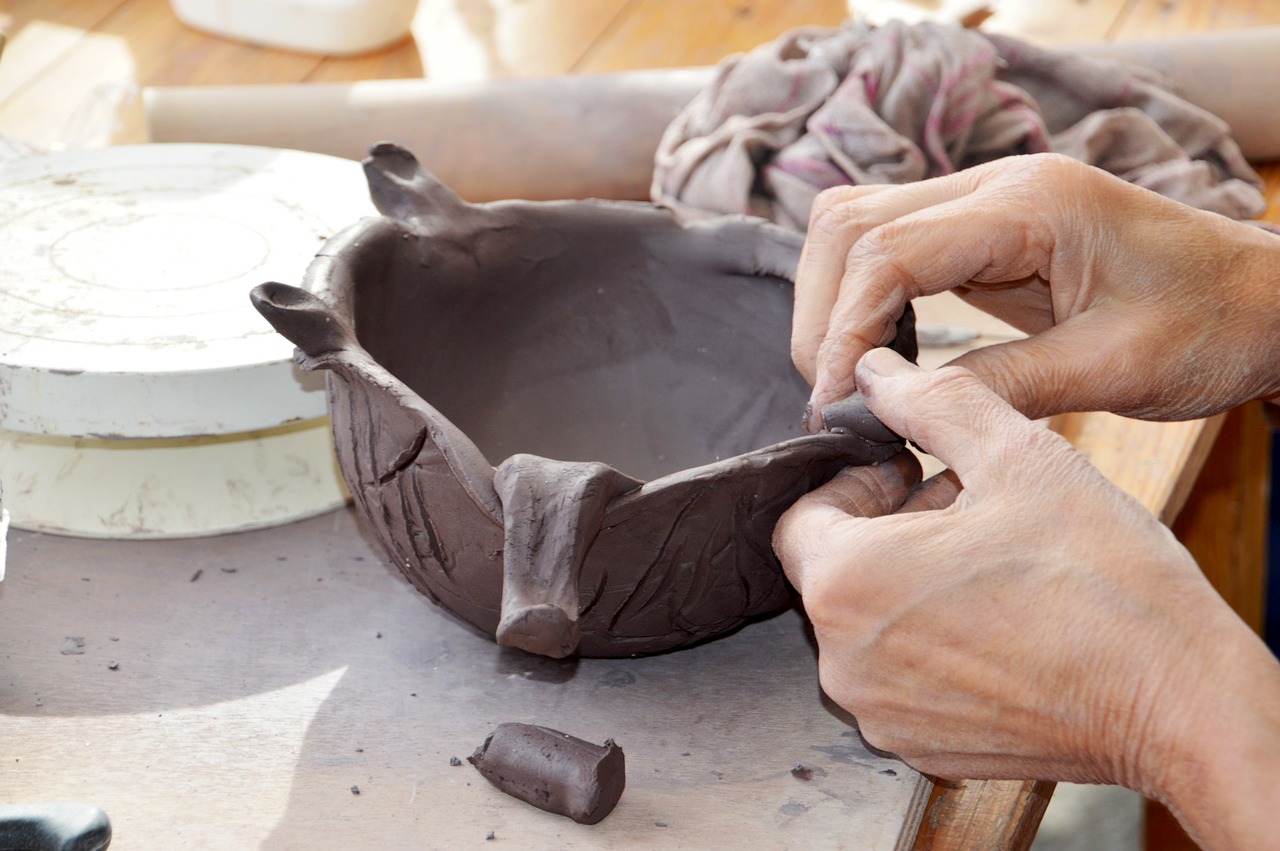
Understanding Your Audience
When it comes to showcasing your pottery, understanding your audience is a game-changer. Imagine inviting a group of people into your home, each with their own tastes and preferences. If you know what they like, you can curate an experience that resonates with them. This is the essence of identifying your target audience for your exhibition. Start by asking yourself: Who appreciates your pottery? Is it art enthusiasts, collectors, or perhaps casual buyers? Understanding their demographics, interests, and motivations will guide your marketing efforts and help you tailor your display to their preferences.
Consider conducting some research to gather insights about your audience. You can use tools like surveys or social media polls to ask questions that matter. For example, you might want to know:
- What styles of pottery do they prefer?
- Are they more interested in functional pieces or decorative art?
- What price range are they comfortable with?
By collecting this information, you can create a profile of your ideal visitor. This profile will not only inform how you design your exhibition but also shape your marketing strategies. For instance, if your audience is primarily young adults interested in modern design, you might want to emphasize sleek, contemporary pieces in your display and use vibrant, trendy colors in your promotional materials.
Moreover, understanding your audience goes beyond just knowing their preferences. It also involves recognizing their emotional connection to pottery. Many people appreciate handmade items because of the stories behind them. They love to hear about the process, the inspiration, and the craftsmanship involved. So, when preparing for your exhibition, think about how you can share these narratives. Create engaging descriptions for each piece, or consider incorporating multimedia elements like videos or live demonstrations that bring your pottery to life.
Another aspect to consider is the **psychographics** of your audience—what they value, their lifestyles, and their purchasing behaviors. For example, if your audience values sustainability, showcasing eco-friendly materials and processes can significantly enhance their interest in your work. You might even consider a section of your exhibition dedicated to explaining how your pottery is made, the materials used, and the environmental impact of your choices.
Lastly, don't forget to engage with your audience during the exhibition. Encourage feedback and interaction. This not only makes them feel valued but also gives you real-time insights that can inform future exhibitions. By creating a dialogue, you transform a simple viewing into a memorable experience, fostering a deeper appreciation for your pottery.
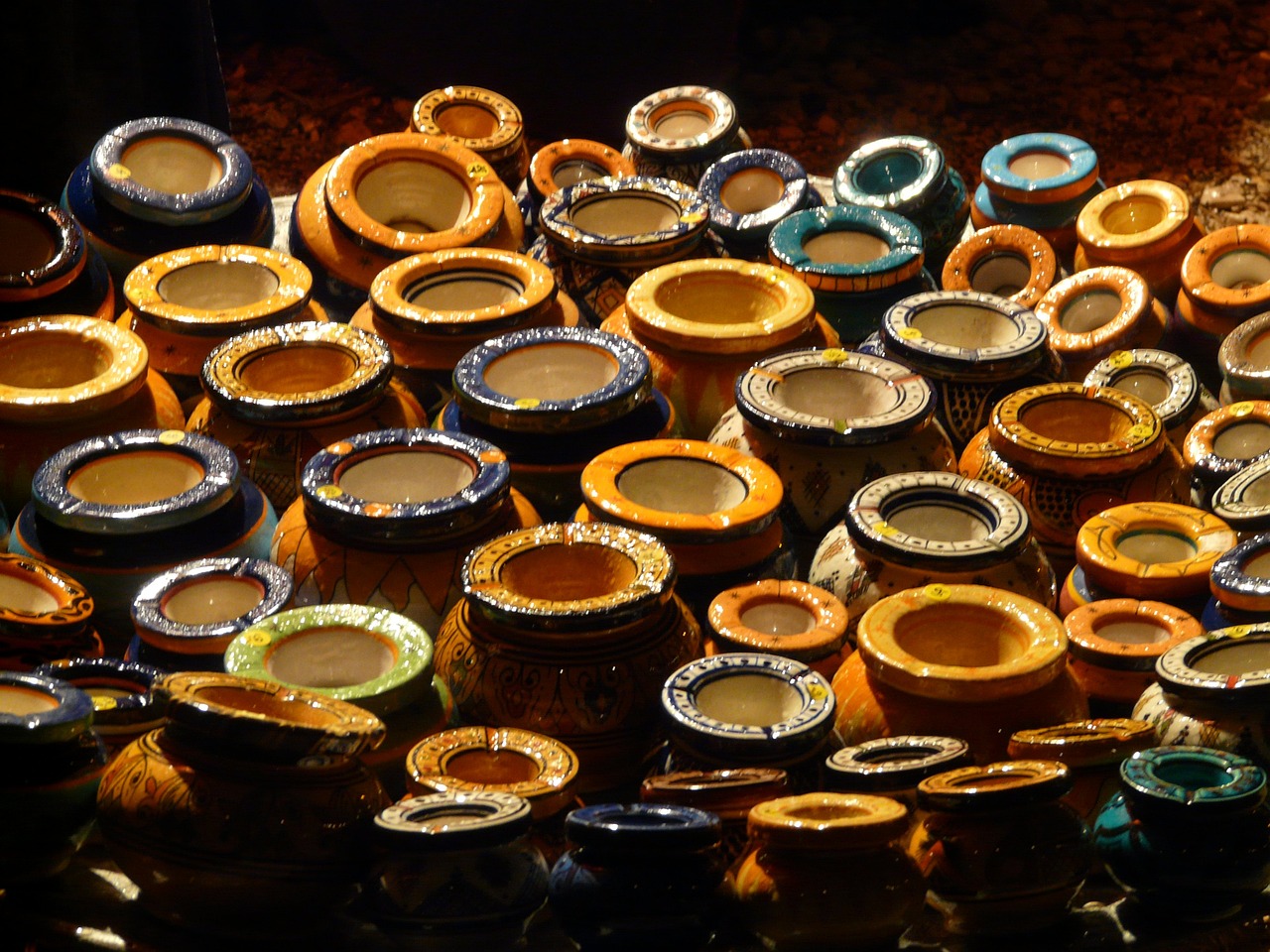
Choosing the Right Venue
When it comes to showcasing your pottery, the choice of venue can make or break your exhibition. Think of it as the stage for a grand performance; the right backdrop can elevate your work and create an unforgettable experience for your visitors. So, what should you consider when picking the perfect spot? Let’s dive into some essential factors that will help you select a venue that not only complements your pottery but also enhances its appeal.
First and foremost, consider the location. Is it easily accessible for your audience? A venue in a bustling area can attract more foot traffic, while a quieter location might offer a more intimate setting. Imagine your pottery pieces basking in the warm glow of natural light, surrounded by curious onlookers. You want a place that draws people in, sparks their interest, and encourages them to linger. Think about how the location aligns with your target audience’s lifestyle. Are they art enthusiasts who frequent galleries, or are they casual passersby who might stumble upon your exhibition?
Next, let’s talk about size. The venue needs to be spacious enough to showcase your collection without feeling cramped. You want your pottery to have room to breathe, allowing visitors to appreciate each piece without feeling overwhelmed. A well-sized venue also facilitates movement, enabling guests to navigate through your exhibition comfortably. Consider creating a simple layout plan to visualize how your pottery will be arranged within the space. You might even want to set up a table to display smaller pieces or provide information about your work.
Another crucial aspect is the ambiance of the venue. The atmosphere should resonate with the essence of your pottery. Are you showcasing earthy, rustic pieces? A venue with a natural, organic feel could enhance that aesthetic. Alternatively, if your pottery is modern and sleek, a contemporary space might be more fitting. The right ambiance can evoke emotions and stories, allowing your audience to connect with your work on a deeper level. Consider elements like lighting, color schemes, and even the type of flooring, as these can all contribute to the overall vibe of your exhibition.
Don’t forget to check the facilities available at your chosen venue. Are there amenities like restrooms, parking, and accessibility options for those with disabilities? Having these facilities can significantly enhance the visitor experience and encourage more people to attend. Additionally, inquire about any technical requirements, such as lighting or display equipment, that you might need for your pottery pieces. It’s always better to be over-prepared than to find yourself scrambling at the last minute!
Lastly, consider the cost of the venue. While you want a fantastic space to showcase your work, it’s essential to stay within your budget. Weigh the benefits of each venue against its rental cost. Sometimes, a more affordable venue can offer just as much value as a high-end location. You might even find unique spaces like community centers or local cafes that are willing to host your exhibition at a lower cost, providing a fresh and inviting atmosphere for your pottery.
In conclusion, choosing the right venue for your pottery exhibition is a multifaceted decision that requires careful thought and planning. By considering location, size, ambiance, facilities, and cost, you can create an environment that not only showcases your work beautifully but also captivates your audience. Remember, a well-chosen venue can transform your exhibition from a simple display into an engaging experience that resonates with visitors long after they leave.
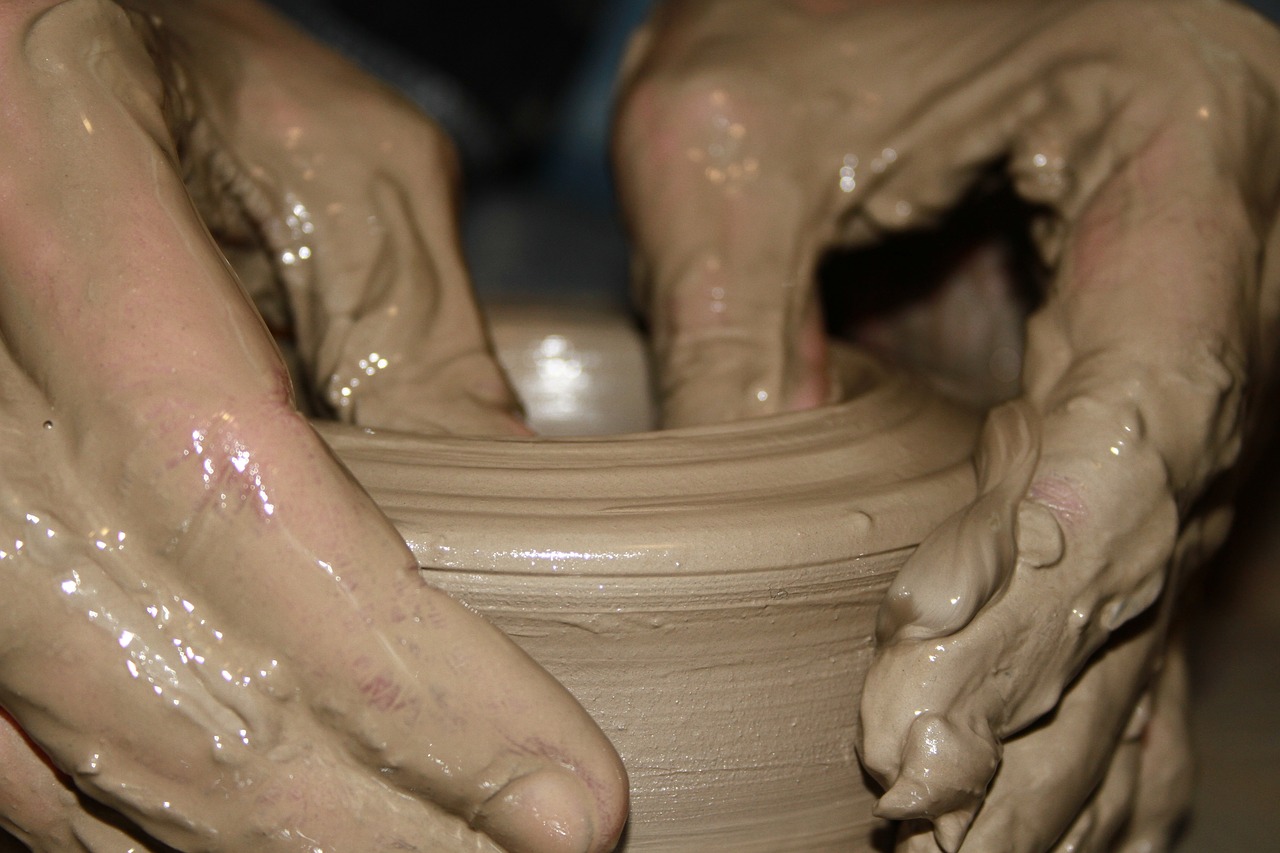
Preparing Your Pottery for Display
When it comes to showcasing your pottery, the preparation stage is where the magic begins. Imagine walking into a gallery filled with stunning pieces, each one telling a story. That’s the kind of atmosphere you want to create! Start by giving your pottery a thorough cleaning. Dust and fingerprints can detract from the beauty of your work, so take the time to ensure that every piece shines. Use a soft cloth and a gentle cleaner to avoid damaging the surface. After all, you want your pottery to look its absolute best!
Next, consider the arrangement of your pieces. This is where you can really get creative! Think about grouping similar items together or creating a visual flow that guides visitors through your exhibition. You might want to consider a few different arrangements before settling on the final layout. For instance, placing larger pieces at eye level can draw attention, while smaller items can be displayed on pedestals or shelves to add depth. Remember, the goal is to create a visually appealing display that invites people to explore.
Another important aspect is the presentation. How you present your pottery can significantly influence how visitors perceive it. Consider using props or backdrops that complement your pieces without overshadowing them. For instance, a simple, neutral-colored cloth can help your pottery stand out. You can also use lighting to your advantage; strategically placed lights can highlight the unique textures and glazes of your work. Just like in a theater, the right lighting can turn a good performance into a spectacular one!
Lastly, don’t forget about labels. Each piece should have a label that includes the title, your name, the materials used, and the year it was created. This not only provides context for your visitors but also adds an element of professionalism to your exhibition. You might even consider including a brief story or inspiration behind each piece. This personal touch can make your pottery resonate more deeply with your audience.
In summary, preparing your pottery for display involves a combination of cleaning, arranging, presenting, and labeling. By paying attention to these details, you’ll create an exhibition that not only showcases your talent but also captivates your audience. Remember, the first impression is everything, so make it count!
- How do I clean my pottery before the exhibition? Use a soft cloth and a gentle cleaner to remove dust and fingerprints without damaging the surface.
- What is the best way to arrange my pottery? Group similar items and consider the visual flow. Larger pieces should be at eye level, while smaller ones can be on pedestals.
- Should I use props in my display? Yes, props or backdrops can enhance your pottery's presentation, but ensure they don’t overshadow your work.
- What information should I include on labels? Include the title, your name, materials used, year created, and a brief story or inspiration behind each piece.
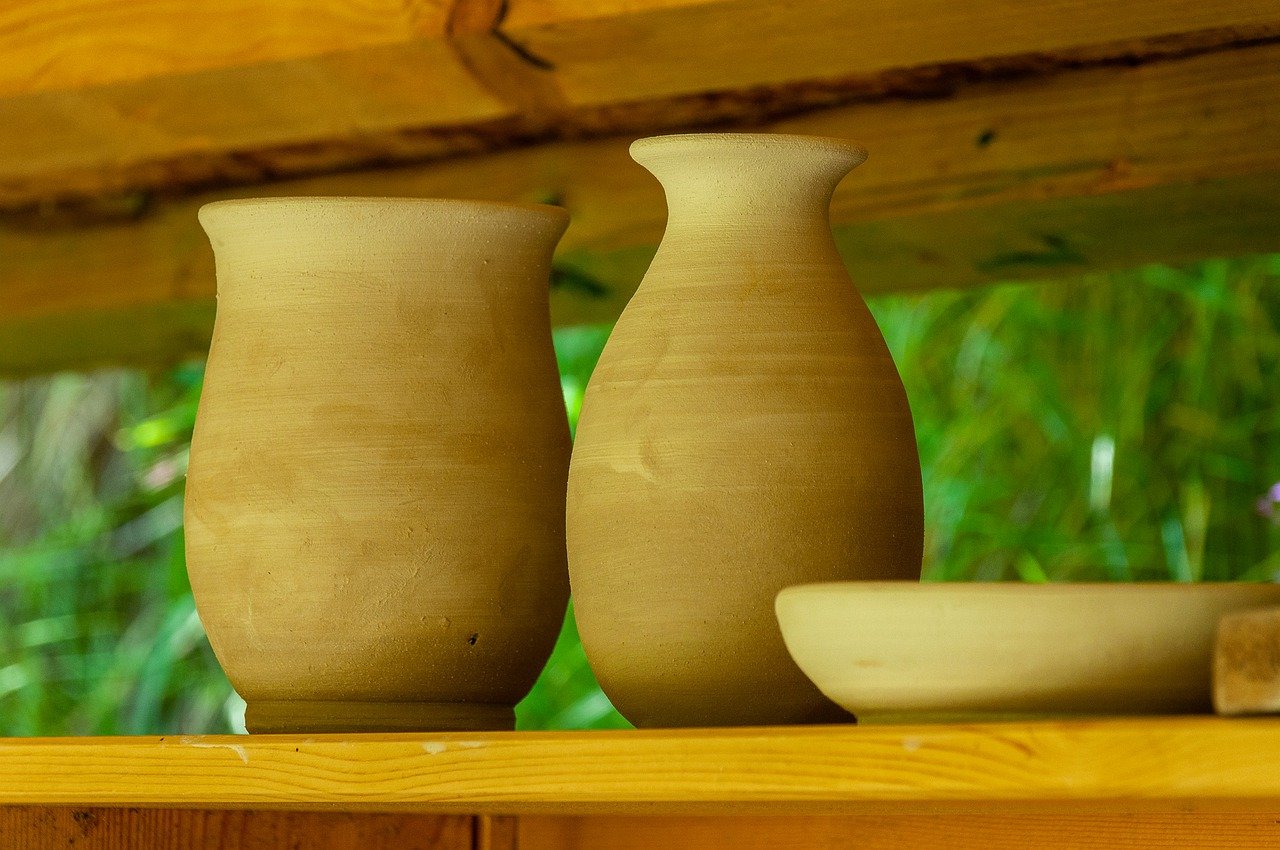
Creating an Engaging Exhibition Layout
When it comes to showcasing your pottery, the layout of your exhibition can make all the difference. Imagine walking into a space where every piece tells a story, where each corner invites you to explore further. That’s the kind of atmosphere you want to create! A well-thought-out layout not only enhances the visual appeal of your work but also encourages visitors to engage with your pieces on a deeper level. So, how do you achieve this?
First, consider the flow of the exhibition. You want visitors to feel like they're on a journey, moving seamlessly from one piece to another. Think about using pathways that guide them through your collection. This can be achieved by arranging your pottery in a way that naturally leads the eye. For instance, placing larger pieces at the beginning can create a focal point, while smaller items can be strategically positioned to draw attention as visitors move through the space.
Another important factor is lighting. The right lighting can transform your pottery, highlighting its textures and colors. Consider using spotlights to illuminate specific pieces or soft ambient lighting to create a warm atmosphere. A well-lit exhibition not only showcases your craftsmanship but also sets the mood for the entire experience. You may want to experiment with different lighting setups before the exhibition opens to see what works best.
Additionally, think about the use of display stands and tables. These can elevate your pottery, literally and figuratively! Using various heights can create visual interest and encourage visitors to look around and appreciate the details of each piece. For example, you might use pedestals for your most striking pieces while placing smaller items on tables or shelves. Just remember to keep the layout accessible; you want everyone to feel comfortable moving around and interacting with your work.
To enhance the experience even further, consider incorporating interactive elements. This could be as simple as providing a space where visitors can leave comments or share their thoughts on your pottery. You might also think about hosting live demonstrations or workshops during the exhibition. This not only draws people in but also allows them to connect with the art form on a personal level. After all, what better way to appreciate pottery than to see the process behind it?
Finally, don't forget to include informational signage throughout your exhibition. This can provide context about your work, your inspiration, and the techniques you used. Clear, concise information can help visitors feel more connected to your pieces, making them more likely to engage with your work and share their thoughts with others.
In summary, creating an engaging exhibition layout involves careful planning and consideration of various elements such as flow, lighting, display stands, interactive features, and informative signage. By focusing on these aspects, you can create a memorable experience that resonates with your audience and showcases your pottery in the best light possible.
- What is the best way to arrange pottery for an exhibition? Start with larger pieces to create a focal point, and arrange smaller items in a way that encourages movement and exploration.
- How important is lighting in an exhibition? Lighting is crucial as it highlights the textures and colors of your pottery, enhancing the overall visual appeal.
- Should I include interactive elements in my exhibition? Yes! Interactive elements like demonstrations or comment spaces can significantly enhance visitor engagement and appreciation.
- What kind of signage should I use? Use clear and concise informational signage to provide context about your work, techniques, and inspiration.

Marketing Your Exhibition
When it comes to showcasing your pottery, effective marketing is essential. Think of it as the megaphone that amplifies your voice in a crowded room. You want to ensure that your beautiful creations are not just sitting in the corner waiting for someone to notice them. Instead, you need to actively draw people in and make them excited about what you have to offer. So, how do you do that?
First and foremost, social media is your best friend. Platforms like Instagram, Facebook, and Pinterest are visual-driven and perfect for showcasing your pottery. Start by posting high-quality images of your pieces. Make sure to use relevant hashtags to reach a broader audience. For example, hashtags like #PotteryExhibition, #CeramicsArt, and #HandmadePottery can help you connect with pottery enthusiasts and potential buyers. Don’t just stop at posting pictures; engage with your followers by sharing the stories behind your pieces or the inspiration that drives your creativity.
Next, consider creating a Facebook event or an Instagram countdown to build anticipation for your exhibition. This not only informs your followers but also encourages them to spread the word. You can even offer a sneak peek of what to expect, which can create a buzz around your event. Remember, people love feeling like they’re part of something special, so make them feel included in the journey.
In addition to social media, local advertising can be incredibly effective. Reach out to local art galleries, coffee shops, and community centers to see if you can display flyers or posters. You might be surprised at how many people appreciate the arts and will be interested in attending your exhibition. Don’t forget about the power of word-of-mouth. Encourage your friends, family, and fellow artists to share your event with their networks.
Another avenue to explore is community outreach. Partner with local schools or community organizations to host workshops or demonstrations leading up to your exhibition. This not only showcases your skills but also engages the community, making them more likely to attend your exhibition. You could even consider offering a small incentive, like a discount on pottery for attendees, to encourage participation.
Finally, consider setting up a newsletter to keep your audience in the loop. Collect email addresses during your exhibitions or through your social media channels. Send out regular updates about your work, upcoming exhibitions, and exclusive offers. This personal touch can create a loyal following and keep your audience excited about what’s to come.
In summary, marketing your pottery exhibition is about creating a buzz and engaging your audience on multiple fronts. By leveraging social media, local advertising, community outreach, and direct communication, you can ensure that your exhibition is a success and that your pottery gets the recognition it deserves. Remember, the more effort you put into marketing, the more rewarding the experience will be for both you and your visitors.
- How can I effectively use social media for my exhibition? Start by posting high-quality images of your work, using relevant hashtags, and engaging with your audience through stories and posts.
- What are some good local advertising strategies? Consider placing flyers in local art galleries, coffee shops, and community centers. Word-of-mouth recommendations also play a significant role.
- How can I engage the community before my exhibition? Host workshops or demonstrations to showcase your pottery skills and build excitement within the community.
- Is it worth setting up a newsletter? Absolutely! A newsletter keeps your audience informed and engaged, helping to build a loyal following.

Setting Up an Online Presence
In today’s fast-paced digital world, establishing a strong online presence is not just beneficial; it's essential for any pottery artist looking to showcase their work. Think of your online presence as your virtual gallery—it's where potential buyers and enthusiasts can explore your creations without having to step foot into a physical space. But how do you create this digital masterpiece? Let's break it down!
First off, consider building a professional website. This is your home base on the internet, where you can display your portfolio, share your story, and provide contact information. A well-designed website can make a lasting impression and serve as a platform for selling your pottery. Aim for a clean, user-friendly layout, and ensure your site is optimized for mobile devices, as many users browse on their phones these days. You can use platforms like Wix, Squarespace, or WordPress to create a stunning website with minimal technical skills.
Once your website is up and running, it's time to fill it with content that resonates with your audience. High-quality images of your pottery are a must—consider investing in professional photography to capture the intricate details and vibrant colors of your work. Remember, a picture is worth a thousand words, and in the art world, it can be the difference between a sale and a missed opportunity. Accompany your images with engaging descriptions that tell the story behind each piece, highlighting your inspiration and the techniques you used.
Next, harness the power of social media. Platforms like Instagram, Facebook, and Pinterest are fantastic for visual artists. They allow you to showcase your pottery in creative ways, engage with your audience, and build a community around your work. Share behind-the-scenes content, such as videos of you in the studio, or even live demonstrations. This not only humanizes your brand but also invites your followers to become part of your artistic journey.
When it comes to social media, consistency is key. Develop a content calendar to keep your posts organized and regular. Use relevant hashtags to increase your visibility and reach a broader audience. Don't forget to interact with your followers—respond to comments, ask for feedback, and encourage them to share your posts. This engagement can create a loyal fan base that will support your exhibitions and purchases.
Additionally, consider starting a blog on your website. This is a great way to share your thoughts on pottery techniques, the creative process, or even the art community at large. Not only does this help with SEO (search engine optimization), making it easier for people to find you online, but it also positions you as an expert in your field. By providing valuable content, you can attract visitors to your site and keep them coming back for more.
Lastly, don’t underestimate the power of email marketing. Building an email list allows you to communicate directly with your audience. You can send out newsletters featuring upcoming exhibitions, new pieces, or exclusive discounts. This personal touch can help foster a deeper connection with your audience and encourage repeat visits to your online store.
In summary, setting up an online presence is a multifaceted task that requires careful planning and execution. By creating a professional website, engaging on social media, blogging, and utilizing email marketing, you can effectively showcase your pottery to a broader audience and create a thriving online community around your art. Remember, your online presence is an extension of your creative self, so make it as vibrant and inviting as your pottery!

Networking with Other Artists
Networking with other artists can be a game changer for your pottery exhibition. Think of it as building a bridge to a community that shares your passion and can help elevate your work. When you connect with fellow artists, you open doors to collaboration, inspiration, and support that can enhance your creative journey. Imagine walking into a room full of like-minded individuals, each with their unique style and stories to share. It’s not just about showcasing your pottery; it’s about creating a vibrant tapestry of artistic expression.
One of the best ways to network is by attending local art events, workshops, and exhibitions. These gatherings are not just opportunities to display your work; they are also a chance to meet other artists who may become collaborators or mentors. Engaging in conversations about techniques, materials, and experiences can spark new ideas and approaches to your craft. Plus, it’s a fantastic way to build relationships that can lead to future exhibitions or joint projects.
Don’t underestimate the power of social media in your networking efforts. Platforms like Instagram and Facebook are not only great for showcasing your pottery but also for connecting with other artists. You can join groups dedicated to pottery and ceramics where you can share your work, seek advice, and even collaborate on projects. Engaging with other artists online can sometimes lead to real-life connections, making it easier to meet up at local events or exhibitions.
Consider hosting or participating in group exhibitions. These events allow you to share the spotlight with other artists, which can attract a larger audience and generate more buzz. When you collaborate on an exhibition, you can pool resources for marketing, share costs, and create a more diverse display that appeals to a broader audience. Plus, it’s a fantastic way to learn from each other’s strengths and weaknesses.
Here are a few tips to help you effectively network with other artists:
- Be Genuine: Approach other artists with a sincere interest in their work. Authenticity goes a long way in building lasting connections.
- Share Resources: If you come across useful tools or opportunities, share them with your network. This creates a supportive environment where everyone benefits.
- Follow Up: After meeting someone, don’t forget to stay in touch. A simple message to say you enjoyed meeting them can keep the connection alive.
In conclusion, networking with other artists is not just about expanding your contacts; it’s about fostering a community that supports and inspires you. By building these relationships, you not only enhance your own artistic journey but also contribute to a richer, more vibrant art scene. So, step out of your comfort zone, engage with fellow artists, and watch how your pottery exhibition flourishes with the power of collaboration!
1. How can I find local artists to network with?
You can find local artists by attending art fairs, exhibitions, and workshops. Additionally, social media platforms and community art groups are excellent places to discover artists in your area.
2. What should I say when approaching another artist?
Start with a genuine compliment about their work, and express your interest in their artistic process. Ask questions that encourage conversation and show that you value their insights.
3. How can I collaborate with other artists effectively?
When collaborating, ensure that all parties are clear about their roles and expectations. Open communication is key to a successful partnership, so share ideas and feedback throughout the process.
4. Is it beneficial to network online?
Absolutely! Online networking can lead to real-life connections and collaborations. Use platforms like Instagram and Facebook to engage with artists and share your work.

Engaging Visitors During the Exhibition
When it comes to hosting a pottery exhibition, creating an interactive experience for your visitors is key to leaving a lasting impression. Think of your exhibition as a vibrant conversation rather than a one-sided presentation. How can you turn passive observers into active participants? By incorporating engaging activities, you can elevate the experience and deepen the appreciation for your craft.
One of the most effective ways to engage visitors is by hosting live demonstrations. Imagine the excitement of watching a potter at work, shaping clay on a wheel, and bringing raw materials to life. This not only captivates your audience but also educates them about the intricacies of pottery making. You could schedule several demonstrations throughout the exhibition, allowing guests to see different techniques and styles in action. Consider showcasing various methods such as wheel throwing, hand-building, or glazing techniques. This variety can cater to different interests and skill levels, making your exhibition accessible to everyone.
Another fantastic way to engage your audience is by offering workshops. These hands-on sessions allow visitors to get their hands dirty and create their own pottery pieces. Imagine the joy on their faces as they mold their unique creations! Whether it's a quick 30-minute session or a longer workshop, providing the opportunity to learn and create can turn casual visitors into passionate pottery enthusiasts. Be sure to have all necessary materials ready, and consider limiting the number of participants to ensure everyone receives adequate attention and guidance.
Additionally, hosting Q&A sessions can foster a deeper connection between you and your audience. After your demonstrations, invite visitors to ask questions about your techniques, inspirations, or even the challenges you face as an artist. This interaction not only enriches the visitor experience but also humanizes your work, allowing attendees to see the person behind the pottery. You might be surprised by the conversations that spark during these sessions, leading to new friendships and potential collaborations.
To further enhance visitor engagement, consider creating an interactive feedback wall. Set up a space where attendees can leave comments, suggestions, or even drawings inspired by your work. This not only provides valuable insights for you but also encourages visitors to express their thoughts and creativity. You could even turn this into a fun contest, offering a small prize for the most creative contribution.
Lastly, don't underestimate the power of storytelling. Share the stories behind your pieces, the inspiration that drives your work, and the journey of your artistic development. People love to connect with the narrative behind an artwork, and this personal touch can make your pottery even more meaningful to them. Consider using placards or digital displays next to your pieces to convey these stories effectively.
In summary, engaging visitors during your pottery exhibition is about creating a dynamic and interactive environment. By incorporating live demonstrations, workshops, Q&A sessions, feedback opportunities, and storytelling, you can transform your exhibition from a simple display into an unforgettable experience. So, are you ready to turn your exhibition into a lively celebration of creativity and connection?
- How can I prepare for a pottery demonstration? Ensure you have all your materials ready, practice your techniques beforehand, and think about how to explain your process clearly to your audience.
- What should I include in a pottery workshop? Provide all necessary tools and materials, have a clear lesson plan, and consider the skill levels of your participants to ensure everyone can enjoy the experience.
- How can I gather feedback from visitors? Create a feedback wall or provide comment cards for visitors to share their thoughts, ensuring you have a way to follow up with them later.
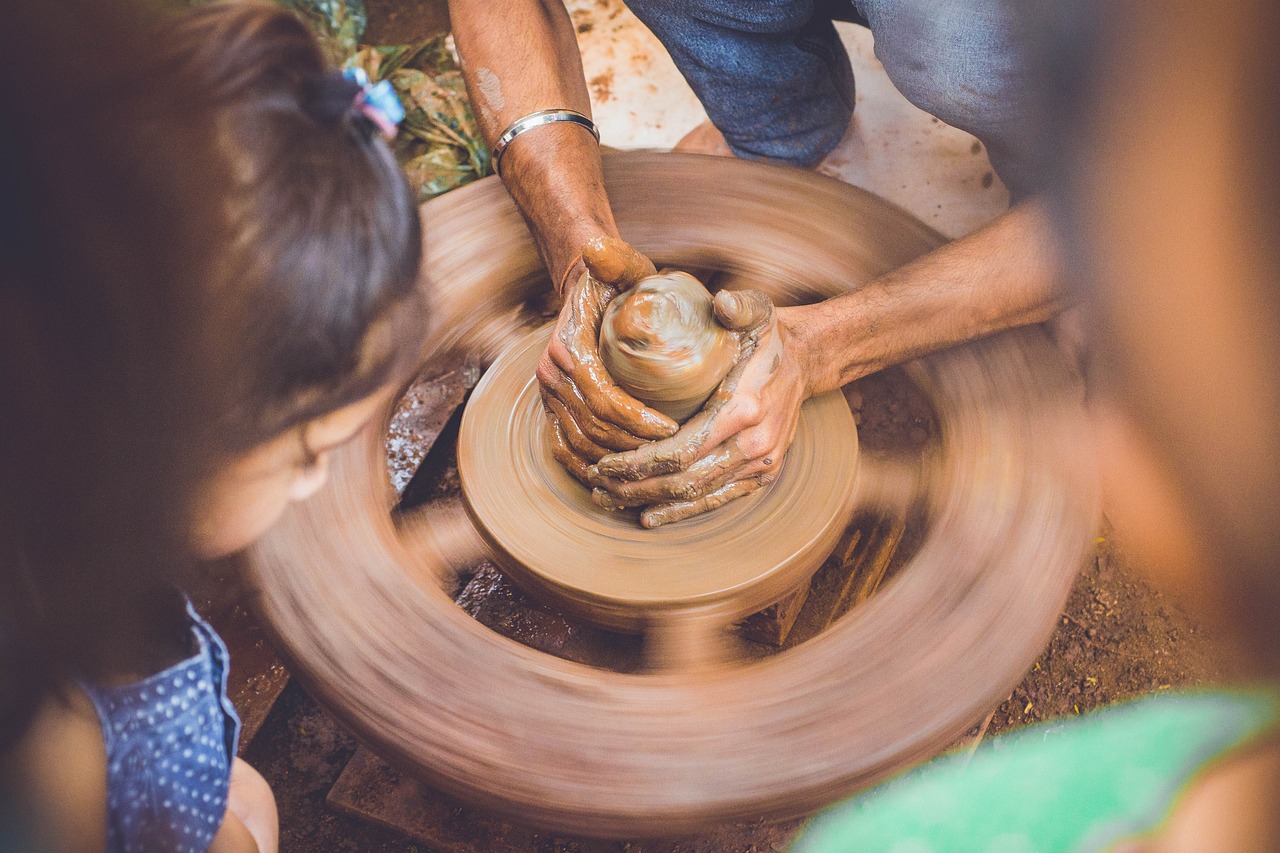
Post-Exhibition Follow-Up
Once the excitement of your pottery exhibition has settled, it’s time to shift gears and focus on the crucial . This phase is often overlooked, but it can significantly impact your future endeavors as an artist. Think of it as the final brushstroke on a beautifully crafted piece of pottery; it completes the work and leaves a lasting impression. So, how do you ensure that the connections you've made during the exhibition continue to flourish?
First and foremost, it’s essential to collect feedback from your visitors. This can be done through simple surveys or informal conversations. Ask questions like, “What did you enjoy the most?” or “Is there anything you think could be improved?” This feedback is invaluable as it not only helps you refine your future exhibitions but also shows your audience that you value their opinions. You might want to create a simple feedback form that can be filled out quickly, ensuring you get as many responses as possible.
Next, don't forget to thank your visitors. A simple thank-you email can go a long way in making people feel appreciated. If you collected email addresses during the exhibition, send out a personalized message expressing your gratitude for their attendance. You could even include a few photos from the event to remind them of the wonderful experience. This gesture not only strengthens your connection but also keeps your pottery fresh in their minds.
Additionally, maintaining connections is vital. Consider creating a newsletter or a mailing list where you can share updates about your future projects, upcoming exhibitions, or even pottery tips. This keeps your audience engaged and makes them feel like they are part of your artistic journey. You can use platforms like Mailchimp to easily manage your mailing list and send out beautiful newsletters.
Lastly, don’t underestimate the power of social media. Post exhibition highlights on your social media platforms. Share stories, behind-the-scenes content, and even testimonials from visitors. This not only keeps the conversation going but also attracts potential new visitors for your next exhibition. Engaging with your audience online can create a vibrant community around your pottery.
In summary, the follow-up phase is just as important as the exhibition itself. By collecting feedback, expressing gratitude, maintaining connections, and leveraging social media, you can create a strong foundation for your future as a pottery artist. Remember, each interaction is an opportunity to build a lasting relationship with your audience, and just like your pottery, it takes time and care to shape these connections into something beautiful.
- Why is post-exhibition follow-up important? It helps maintain relationships with visitors, gather feedback for improvement, and promote future events.
- How can I collect feedback effectively? Use surveys, informal conversations, or feedback forms to gather insights from your attendees.
- What should I include in my thank-you emails? Express gratitude, share exhibition highlights, and invite them to follow your future work.
- How can I keep my audience engaged after the exhibition? Create a newsletter, share updates on social media, and offer exclusive content or tips related to pottery.
Frequently Asked Questions
-
What should I consider when identifying my target audience for a pottery exhibition?
Understanding your audience is key! Think about who appreciates your style of pottery—are they collectors, casual buyers, or art enthusiasts? Knowing this helps you tailor your marketing efforts and display to attract the right crowd. It’s like throwing a party; you want to invite the guests who will enjoy the vibe you’re creating!
-
How do I choose the right venue for my pottery exhibition?
Choosing a venue is like picking the perfect stage for a performance! Consider factors like location, size, and ambiance. You want a space that complements your pottery and is easily accessible to your audience. A cozy gallery might be perfect for intimate pieces, while a larger space could showcase bigger works or installations.
-
What are some tips for preparing my pottery for display?
Preparation is everything! Start by cleaning your pieces to ensure they sparkle. Arrange them thoughtfully, highlighting their unique features. Think about using stands or shelves to create layers and depth. It's like setting up a stage for your pottery to shine in the spotlight!
-
How can I create an engaging exhibition layout?
Layout matters! Consider flow and sightlines to encourage visitors to explore. Use groupings of similar pieces to create a theme, and leave space for people to move around comfortably. An engaging layout can spark conversations, making your exhibition feel lively and inviting!
-
What marketing strategies should I use to promote my pottery exhibition?
Marketing is your megaphone! Use social media to share sneak peeks of your work and behind-the-scenes moments. Local advertising, like flyers or community boards, can also help. Don’t forget to tap into your network—word of mouth is powerful!
-
Why is having an online presence important for my pottery exhibition?
In today’s digital world, an online presence is essential. It allows you to showcase your pottery to a wider audience. A website or social media profile can serve as a gallery, making it easy for people to see your work and find exhibition details. It’s like having a virtual storefront open 24/7!
-
How can networking with other artists benefit my exhibition?
Networking is like building a support squad! Connecting with fellow artists can open doors to collaboration and resource sharing. You can exchange tips, promote each other’s work, and even plan joint exhibitions, which can amplify your reach and impact.
-
What interactive experiences can I create for visitors during the exhibition?
Engagement is key to leaving a lasting impression! Consider hosting live demonstrations or workshops where visitors can try their hand at pottery. Q&A sessions can also deepen their appreciation and create a memorable experience. It’s all about making your exhibition fun and interactive!
-
How should I follow up with attendees after the exhibition?
Post-exhibition follow-up is crucial for building community. Send thank-you notes or emails to attendees, gather feedback to improve future events, and keep the conversation going. This helps to foster a loyal audience who will be excited about your next exhibition!



















